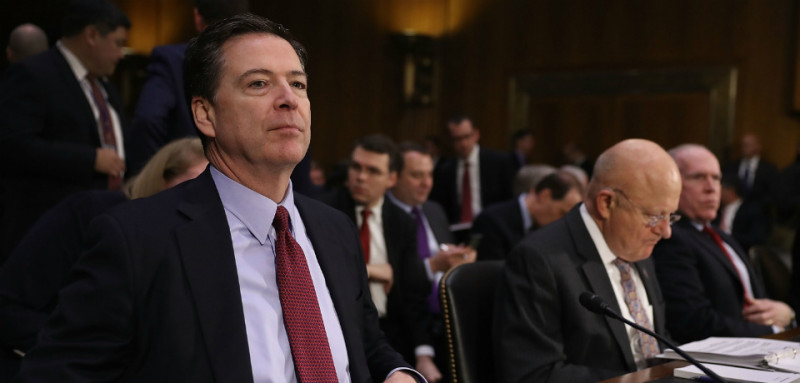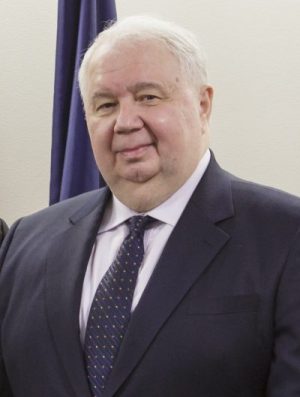We now know that, before Donald Trump’s inauguration on January 20, 2017, the FBI had the ouster of Lt. Gen. Michael Flynn, the President’s National Security Adviser, in its sights. By February 13th, Flynn was out the door.

Think about it. Why was Flynn’s removal of the utmost importance to the FBI, more vital than removal of any other cabinet officer like the Pentagon or State Department.
So crucial was it that they created a specific strategy willing to embrace prosecutorial misconduct and agency malfeasance to take Flynn down. Prosecutorial misdeeds are nothing new to the FBI as they have a well founded history of corruption over the years with its warts now publicly displayed.
It does not take a poli sci major to figure out that Flynn’s immediate removal from the Administration was essential to undermining Trump’s entire foreign policy initiatives including no new interventionist wars, peace with Russia and US withdrawal from Syria and Afghanistan.
In retrospect, the entire fraudulent Russiagate conspiracy makes sense when viewed from the perspective of an effort to rein in Trump’s foreign policy goals of which Flynn would have been a necessary, integral part.
The question is where did the first glimmer of setting up Flynn originate? Who had the most to gain by disrupting Trump’s foreign policy agenda?
A number of suspects come to mind including the evil Brennan/Clapper twins, a bureaucratically well placed neocon, an interested foreign entity like Israel or somewhere deep within the dark bowels of the FBI, all of which are in sync with the Democratic leadership and its corporate media minions.
At the time, the Washington Post, a favorite CIA organ, was reporting that Flynn had ‘hinted’ to Russian Ambassador Sergey Kislyak that Trump might be willing to ‘relax’ sanctions against Russia.
It was then claimed that Flynn had ‘misled’ VP Pence by denying that he had had a conversation regarding sanctions with Kislyak. None of it was true.
With Flynn removed, Trump never regained his footing on foreign policy – which no doubt was exactly as intended; thereby opening the door for the likes of Jared Kushner to assume the role of ‘trusted adviser.”
Let’s examine how the FBI eliminated Flynn:
In August, 2016, an FBI ‘strategic intelligence briefing’ was conducted for candidate Trump with Flynn as his national security adviser in attendance.
The briefing, which was not a traditional ‘defensive’ briefing in which a presidential candidate is alerted of a foreign government’s effort to intercede in their campaign, was led by an anonymous “experienced FBI counter intelligence agent.”
According to the IG Report on FISA abuses, at that time Flynn was already a “subject in the ongoing Crossfire Hurricane investigation.”
The IG Report confirms that, after the election, top FBI officials discussed ‘interview strategies’ regarding how to set Flynn up in an ostensibly innocent conversation.
Former FBI Deputy Director Andrew McCabe arranged the meeting with the goal to walk Flynn into a well laid trap without informing him that there was a criminal investigation underway or that he was a target.
Such a procedure is called ‘entrapment’ and considered illegal See Clint Eastwood’s new film Richard Jewell for details on the FBI’s entrapment techniques.

Photo Credit: (NASA/Joel Kowsky)
Image on the right: Ambassador Sergey Kislyak (Source: Wikimedia Commons)
On January 24, 2017, four days after the Inaugural, Peter Strzok, former FBI Chief of counterespionage and the same unnamed SSA1 (Supervisory Special Agent) who led the August briefing met with Flynn for a friendly chat, more popularly referred to as the Ambush Interview.
At that time, either one or both agents took handwritten notes while neither provided the usual heads-up about penalties for making a false statement – since that would have tipped their hand.
Since Flynn believed this was an informal visit, he did not feel the need to have an attorney present or inquire why, if this was a friendly get-to-know chat, the need to take notes. That conversation led to Flynn being charged with ‘lying to the FBI’ regarding his conversation with Kislyak.
After the interview, preparation of a 302 form is normal procedure. A 302 is a summary of and a formalizing of those notes taken during the conversation.
It is those original 302 notes which are in dispute and which the FBI refuses to provide to either the Senate Judiciary Committee or to Flynn’s attorney, Sidney Powell.
What does that tell you? Powell believes, based on sworn witness testimony, that the final 302 is not an accurate reflection of the 302 notes or Flynn’s statements of January 24th.
It is curious that an SSA1 whose identity remained cloaked in secrecy throughout the entire IG FISA Report continues to be mentioned as a significant participant in the Bureau’s Crossfire Hurricane while his name remains redacted on official documents. Disguising his identity may simply be attributed to activities worth concealing.
In an unexpected turn, it was Sen. Chuck Grassley, Chair of the Senate Judiciary Committee who outed the SSA 1 as agent Joe Pientka in his May 11, 2018 letter to the Bureau. Pientka remains a central figure in the FBI scam against Flynn as well as other clandestine activities identified within the Crossfire operation – and there’s more.
According to Strzok, Pientka was “primarily responsible” as the ‘note taker’ and prepared the 302 report of the interview on which Flynn’s prosecution is based. Powell has challenged authorship since the final 302 version contains falsified statements never made in the original interview that are now being criminalized.
In a message to his paramour Lisa Page, Strzok thanked Page for her ‘edits’ on the 302 regarding the Flynn – Kislyak conversation on sanctions that never occurred while Strzok suggested that, at some future time, they discuss a ‘media leak strategy.’
Soon after Flynn’s resignation, a skeptical Grassley requested unredacted transcripts of the Flynn – Kislyak conversation with the FBI repeatedly refusing to comply.
Grassley’s May 11th letter confirms that Comey was aware that Flynn had not lied regarding the Kislyak conversation and further points out the stunning revelation that that Pientka was ‘on detail’ as staff on the Judiciary Committee, presumably with the Democrats.
For all his persistence, the FBI continues to rebuff Grassley’s assertions for a transcript of the Kislyak conversation as well as demanding Pientka’s presence “for a transcribed interview with Committee staff.”
In response to an ‘insufficient’ FBI reply, Grassley then let loose with a June 6th zinger detailing a compilation of FBI lies, failures and hypocrisies too numerous to be articulated (but worth reading) here.
While a review of the FBI’s entire prosecution of Flynn raises considerable legal and ethical questions, the Bureau’s consistent refusal to turnover evidentiary material is indicative of a deceitful agency protecting its own criminal behavior.
- Why is the FBI embedding an SSA1 with the Senate Committee that has legislative jurisdiction over its mission? Does this strike anyone else like the tactic of a totalitarian state?
- How does Flynn’s case move forward without the FBI providing the necessary exculpatory documents legally required for every defendant?
- How does a Congressional Committee provide effective oversight and accountability if they are continually stonewalled by the very agency within their legal authority?
- How can the FBI ever be rehabilitated if Congress, fearful of a constitutional crisis, has no political will to assert its proper authority and issue a Contempt of Congress subpoena?
- With the FBI out of control, Is this any way to run a country?
Renee Parsons has been a member of the ACLU’s Florida State Board of Directors and President of the ACLU Treasure Coast Chapter. She has been an elected public official in Colorado, an environmental lobbyist with Friends of the Earth and staff member in the US House of Representatives in Washington, DC. Renee is also a student of the Quantum Field and may be reached at @reneedove31. She is a frequent contributor to Global Research.
The original source of this article is Global Research
The 21st Century
